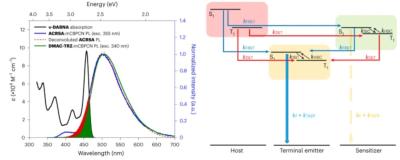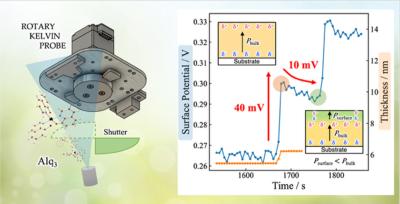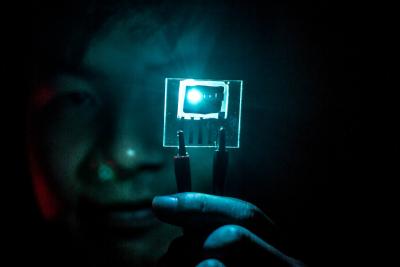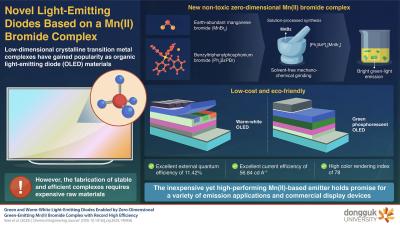Researchers from Durham University use long-forgotten OLED emitter molecules to enable highly efficient hyperfluorescence OLED devices
Researchers Durham University, led by Professor Andrew Monkman, discover new OLED emitters that offer high performance in a hyperfluorescence emission system. The main new material, a molecule called ACRSA, was found to triple the efficiency of hyperfluorescence OLED devices.
These OLED emitters aren't actually new - they were studied years ago, but were found to be poor emitters. That was true when used as OLED emitters, but when used in a hyperfluorescence system (which combines both fluorescent and TADF emitters), these were surprisingly efficient. The ACRSA emits a green emission, but deep blue light emission can be achieved by transferring ACRSA's energy to a blue terminal emitter. This approach reduces exciton energy compared to direct blue emission in devices, allowing more stable, longer-lasting blue OLEDs.










